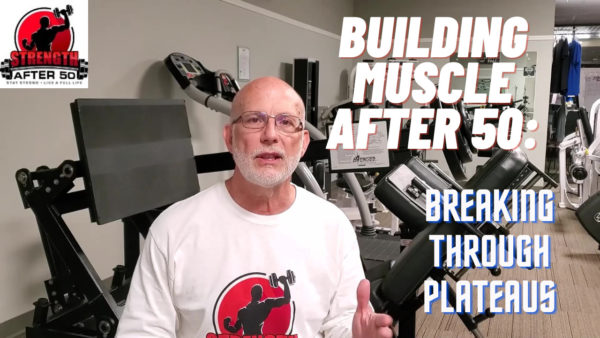Gaining muscle after 50 is something many people are skeptical about. And often, that skepticism acts as a barrier to getting started on a strength training program.
But building muscle mass and strength is definitely possible after 50. And, it is one of the most important things we can do to gain and maintain our highest possible level of pain-free function as we get older.
Resistance exercise like weight training is one of the best ways of reversing the loss of muscle mass as you age. (Webmd.com)
Gaining muscle mass after 50 requires that you incorporate progressive resistance exercise into your strength training program. That means you have to constantly strive to do more reps, more weight, or both, every time you work out.
But what do you do if you get stuck at a certain weight on a certain strength training exercise, and you can’t break through that plateau? This was a question I recently got asked via email from a subscriber named Isaac.
Try this technique for gaining muscle after 50
Isaac wanted to know what he could do if he was “Stuck at a certain weight on an exercise and not sure how to progress”.
And the answer is: You can try an advanced weight training technique called micro-loading.
Micro-loading works great for older adults trying to build muscle mass, because it’s safe and simple to do. And, you can utilize this technique whether you are training with free weights or machines.
Check out the video to learn the micro-loading technique for gaining muscle after 50:
Gaining muscle after 50 through proper strength training is the best investment you can make in yourself to keep you strong, active, and living fully for a long, long time. Get started now applying the principles and techniques outline here, and enjoy your later years to the fullest!
For answers to YOUR questions about how to build and maintain strength after 50 on a video like this, subscribe here, Then email me your question.
Related content for gaining muscle after 50:
-
Case Study: How I Added 2.2 Pounds Of Muscle With Four 30-Minute Workouts At Age 63
-
Is Building Muscle After 50 Really Something You Can Realistically Achieve?


2 Comments. Leave new
Great information Dave!
I have some add on blocks for my home gym. 2.5 and 5 pounds respectively . Certainly makes a difference.
I also have a pair of power blocks dumbbells. I can add 1/4 pound cylinders the handles.
Awesome Jay, we have the 2.5 blocks in our studio also, and the weight stacks on the Med-X machines we have go up in 2 pound increments. All these tiny increases add up to force your body to adapt to a new stimulus. That’s what it’s all about!